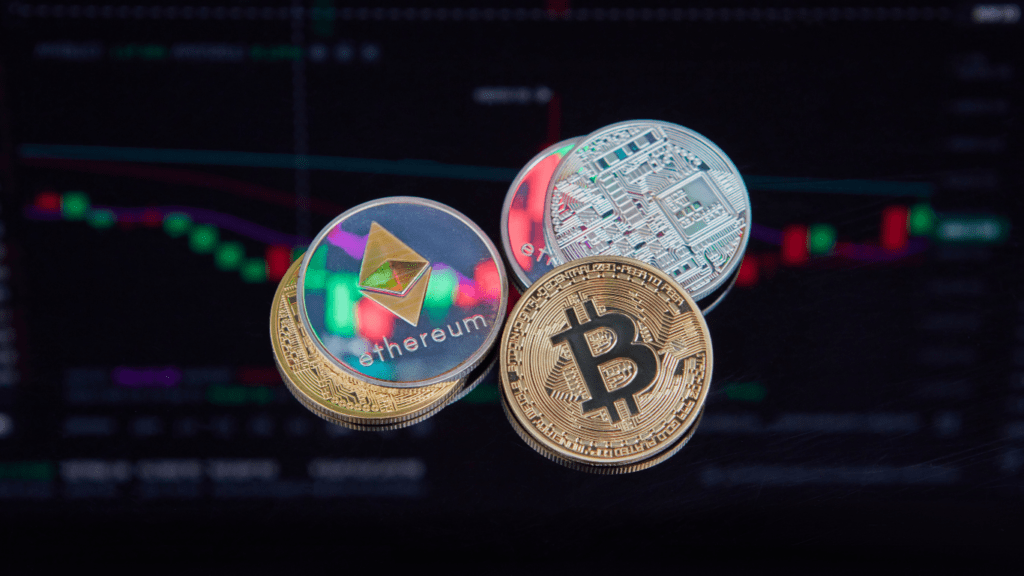Blockchain Basics and Technological Underpinnings
Blockchain’s impact on modern finance stems from its innovative structure and functionality.
What Is Blockchain?
Blockchain is a digital ledger where transactions are recorded across multiple computers in a secure, transparent, and decentralized manner.
This technology removes the need for intermediaries, allowing for peer-to-peer transactions that are immutable and verifiable. Each record, or block, is linked to the previous one, forming a chain that ensures data integrity.
How Does Blockchain Technology Work?
Blockchain operates through a network of nodes that validate and record transactions. When a transaction occurs, it’s grouped into a block with other transactions.
This block is then sent to the network for validation. Nodes, which are participants in the network, use consensus mechanisms like:
- Proof of Work (PoW)
- Proof of Stake (PoS)
to verify the block.
Once validated, the block is added to the chain, making the transaction complete and irrevocable. Blockchain uses encryption to secure data, ensuring privacy and preventing unauthorized access.
The Role of Blockchain in Modern Finance
Blockchain technology revolutionizes modern finance through its intrinsic characteristics of decentralization, security, and transparency.
Enhancing Security in Financial Transactions
Blockchain significantly enhances transaction security. Its decentralized structure ensures data isn’t stored in a single location, reducing the risk of hacking.
Each transaction, recorded in a block, undergoes validation by multiple nodes. This consensus mechanism prevents unauthorized alterations.
Transactions, once recorded, can’t be changed, ensuring integrity. Use cases include securing cross-border payments and digital identity verification. In these instances, blockchain mitigates fraud risks and enhances the overall security framework.
Improving Transparency and Traceability
Blockchain improves transparency and traceability in financial dealings. Each transaction, logged on a public ledger, is accessible to all participants. This visibility allows for easier audits and compliance checks, reducing operational risks.
Organizations can trace the origin of assets through blockchain. In supply chain finance, tracking goods from production to delivery becomes feasible.
Similarly, in asset management, the provenance of assets can be verified, ensuring authenticity and reducing counterfeit risks. The immutable nature of blockchain records fosters trust among all stakeholders.
Use Cases of Blockchain in Financial Sector

Blockchain technology has several applications that are transforming the financial landscape. Its decentralized, secure, and transparent nature opens up numerous innovative possibilities.
Blockchain in Banking
Blockchain improves efficiency in banking by streamlining procedures and reducing intermediaries. By automating and securing processes through smart contracts, transactions become faster and less costly.
For example, HSBC has successfully implemented blockchain for foreign exchange trades, settling over $250 billion in transactions.
Blockchain also enhances KYC (Know Your Customer) protocols by securely sharing verified customer data across institutions, reducing the time and cost associated with verification processes.
Cryptocurrency and Decentralized Finance (DeFi)
Cryptocurrency, a major application of blockchain, enables peer-to-peer transactions without the need for a central authority. Bitcoin and Ethereum, for example, are widely recognized digital currencies facilitating global transactions.
DeFi expands on this by offering financial services like lending, borrowing, and trading without intermediaries.
Platforms such as Uniswap, which has a trading volume exceeding $1 billion daily, allow users to trade assets directly on the blockchain, increasing accessibility and reducing costs associated with traditional finance systems.
Challenges and Considerations
Blockchain’s role in modern finance presents several obstacles that need addressing. Here are the primary concerns to consider.
Regulatory Challenges
Governments worldwide grapple with regulating blockchain technology. Different jurisdictions have varying laws, creating inconsistencies.
For instance, cryptocurrency regulations differ significantly between the US, China, and the EU. This disparity complicates compliance for businesses operating internationally.
Inconsistent regulatory frameworks also hinder innovation, as companies may hesitate to invest in regions with unclear legal landscapes. Organizations must stay informed about regulatory changes to navigate this evolving environment.
Scalability and Performance Issues
Blockchain scalability remains a significant hurdle. While Bitcoin and Ethereum can process 4.6 and 15 transactions per second (TPS), respectively, Visa handles around 24,000 TPS.
This vast difference limits blockchain’s ability to handle large-scale financial operations. Additionally, increased network usage can lead to higher transaction fees and slower processing times.
Solutions like sharding and layer-2 protocols (e.g., Lightning Network for Bitcoin) aim to improve scalability, but widespread adoption is still needed. Optimizing blockchain performance is crucial for its broader financial integration.
Future Trends in Blockchain Finance
Blockchain continues to revolutionize finance, prompting significant industry changes and setting the stage for future trends. As technology evolves, several key trends are emerging.
Predictions for Blockchain Evolution
- Blockchain will likely see wider adoption across financial services due to its inherent security and transparency.
- Central banks may adopt Central Bank Digital Currencies (CBDCs), leveraging blockchain for secure and efficient financial transactions.
- According to the Bank for International Settlements, around 86% of central banks are researching CBDCs.
- Smart contracts will also grow, minimizing the need for intermediaries and automating complex financial agreements.
- Decentralized Autonomous Organizations (DAOs) might redefine corporate governance by enabling shareholder voting and decision-making via blockchain.
- Since the inception of Bitcoin in 2009, blockchain has expanded from cryptocurrencies to applications in supply chain management, KYC processes, and beyond, showing its versatile potential.






